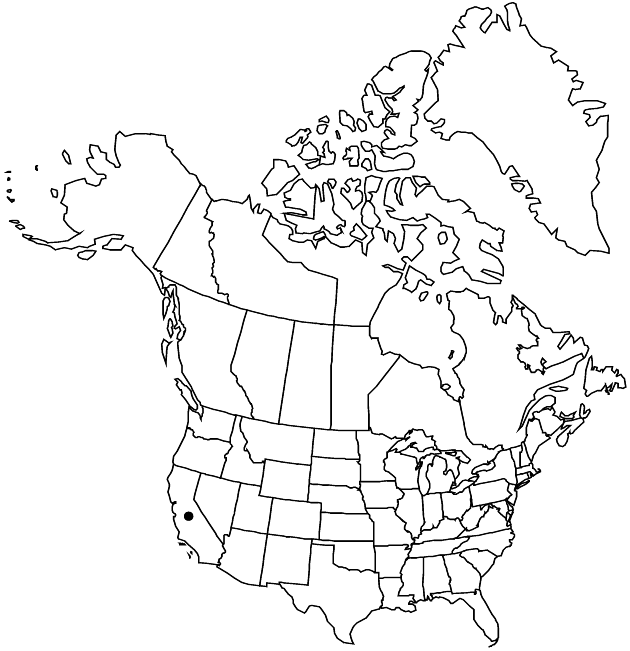Ancistrocarphus keilii
Novon 14: 464, fig. 1. 2004.
Plants 0.5–1 (–2) cm. Stems 0. Leaves basal, petiolate, largest 8–10 (–18) × 1 (–2) mm, some ± grading into pistillate paleae (by reduction or loss of blades and expansion of petiole bases, resembling aristate phyllaries); bases (of petioles) expanded, 3-nerved, yellowish tan, parchmentlike, closely involucral. Heads borne singly amidst surrounding leaves (see discussion below), 2.5–3.5 mm. Phyllaries 0. Receptacles broadly hourglass-shaped, 0.9–1.3 mm. Pistillate paleae: wings obscure, incurved, lanceolate, ± involute. Staminate paleae 5 (–7), broadly spatulate, 1.8–2.8 mm, slightly surpassed by pistillate; apices incurved, ± involute, obtuse to rounded, apiculate, shortly scarious, not spinose. Staminate corollas ± zygomorphic, 0.9–1.3 mm, lobes 4, unequal (1–2 enlarged). Cypselae 1–1.4 × 0.5–0.6 mm, transverse bands 0.
Phenology: Flowering and fruiting Mar–Apr.
Habitat: Sandy soils, chaparral bordering oak woodlands, under shrubs
Elevation: 40–130 m
Discussion
Of conservation concern.
Unlike Ancistrocarphus filagineus, A. keilii has no obvious dispersal mechanism. Its cypselae appear to germinate more or less in place from previous years’ plants, often producing dense, turflike growths of dozens to hundreds of individuals (these sometimes resemble leafy glomerules of heads; each head is on a separate plant with its own root). Lack of dispersal may explain its very limited geographic range in the Santa Ynez River drainage of Santa Barbara County. Its range does not appear to overlap with that of A. filagineus, which is found farther inland to the east and north. No other Filagininae have been found mixed with A. keilii, suggesting that its habitat is fairly distinctive.
Ancistrocarphus keilii is known from only three collections and appears to occur in relatively vulnerable habitats (J. D. Morefield 2004).
Selected References
None.

